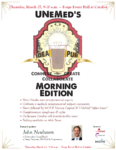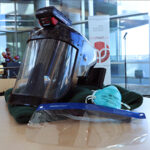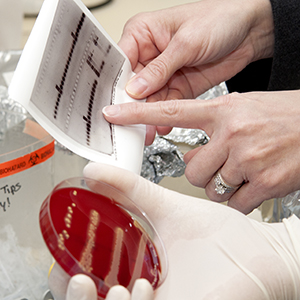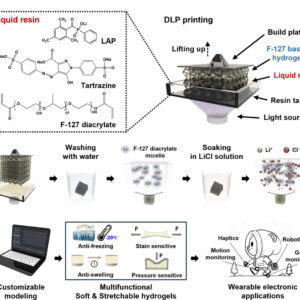by Bill Hadley, UNeMed | Aug. 28, 2012
Believe it or not, for most of us, the classic 1971 movie Willy Wonka and the Chocolate Factory was our first experience with intellectual property. For those who haven’t seen it (SPOILERS!) the plot can be reduced to this: a reclusive candy mogul (Willy Wonka) wishes to pass on his secret recipe for chocolate to a worthy heir and, to do so, distributes 5 golden tickets to the public by way of his candy bars. The lucky recipients of these tickets are rewarded with a tour through Wonka’s mysterious factory where, at the end, one person (the incorruptible Charlie Bucket) is identified as the heir to the Wonka chocolate recipe.
As silly as it seems, the Wonka chocolate recipe is a perfect example of the little brother of intellectual property protection mechanisms: the trade secret. While patents, copyrights, and trademarks are the most well-known IP protection schemes, the importance of trade secrets should not be undersold. In fact, many interesting innovations are still protected by trade secret today, including the composition of WD-40, the recipe for Twinkies, Google’s search algorithm, and, of course, the inestimable Coca-Cola recipe.

Image by trexfiles23
Because trade secrets are dependent on the – surprise! – secrecy of their innovations, trade secrets are anathema to university culture. Nevertheless, over the course of their careers, many UNMC faculty, students, and staff will work with industrial partners who have valuable trade secrets. Moreover, understanding the relationship between trade secrets and patents is crucial to understanding the patent system as a whole. So, without further ado, let’s look at the law surrounding trade secrets.
The Basics of Trade Secrets
Trade Secrets are interesting in that they are generally considered matters of state law; consequently, the definition of a trade secret can be subtly different in different states. Fortunately, the Uniform Trade Secrets Act (UTSA; a model act published by the Uniform Law Commission) has been adopted in some form in 46 states (including Nebraska). Under the UTSA, a trade secret is defined as:
Any information, including a formula, pattern, compilation, program, device, method, technique, or process that:
(i) Derives independent economic value, actual or potential, from not being generally known to, and not being readily ascertainable by proper means by, other persons who can obtain economic value from its disclosure or use, and
(ii) Is the subject of efforts that are reasonable under the circumstances to maintain its secrecy.
So, in more general terms, a trade secret is any information which falls into the stated categories which is valuable, at least in part, due to its secrecy (read: exclusivity to the owner) and which the owner maintains at least reasonable efforts to keep secret.
Rights Given by a Trade Secret
In general, trade secrets protect their holder from competitors who seek to use the protected innovation, if that competitor has obtained the protected information by an improper means or through misappropriation. That is to say, if, for example, Microsoft was able to (illegally) hack in Google’s internal network and retrieve Google’s search engine algorithm, Google could sue Microsoft for infringing their trade secret rights.
The UTSA provides a number of remedies to parties whose trade secret rights have been infringed, including:
1. An infringed party may enjoin (stop) the alleged infringer from using the trade secret information.
2. The infringed party may recover damages from the misappropriating party (lost profits, etc.)
Remember, as a model act, the UTSA is not necessarily implemented uniformly throughout its adopting jurisdictions. Therefore, when considering a trade secret issue, it is prudent to consult your state laws to investigate how the UTSA is applied in your jurisdiction (if at all).
Additionally, the Economic Espionage Act of 1996 has trade secret- related provisions which make theft or misappropriation of a trade secret a federal crime. 18 U.S.C. §1831 criminalizes theft of a trade secret to benefit a foreign power while 18 U.S.C. §1832 criminalizes theft of a trade secret for economic purposes.
Misappropriation of Trade Secrets
It is important to note that a trade secret does not protect its owner from a rival who legitimately reverse-engineers or discovers the secret information. Borrowing from my earlier example, if, instead of hacking into Google’s network, Microsoft had been able to chart trillions of normal Google searches, and was able to deduce the exact mechanisms by which the search results are produced from this body of information, the Google algorithm would be considered “ascertained by proper means” under the UTSA, and trade secret law would not protect Google from Microsoft from using the same search algorithm within its own search engine, Bing.
 It is very important, then, to understand when a trade secret has been discovered by improper means or when it has been inequitably misappropriated. Under the UTSA, trade secrets are obtained via “improper means” when they are uncovered by theft, bribery, misrepresentation, breach (or inducement to breach) of a duty to maintain secrecy, or espionage (electronic or otherwise). “Misappropriation”, essentially, is acquisition of a trade secret by one person from another, when the first person knows, or has reason to believe, that the other has acquired the trade secret through improper means, or if the first person acquires the secret information through certain other inequitable conduct.
It is very important, then, to understand when a trade secret has been discovered by improper means or when it has been inequitably misappropriated. Under the UTSA, trade secrets are obtained via “improper means” when they are uncovered by theft, bribery, misrepresentation, breach (or inducement to breach) of a duty to maintain secrecy, or espionage (electronic or otherwise). “Misappropriation”, essentially, is acquisition of a trade secret by one person from another, when the first person knows, or has reason to believe, that the other has acquired the trade secret through improper means, or if the first person acquires the secret information through certain other inequitable conduct.
Trade Secrets at UNMC
As I mentioned earlier, it is anathema for an institution of higher learning such as UNMC not to disclose to the public information discovered by its faculty and students. Therefore, only in the most extreme circumstances will UNeMed elect to protect an invention by trade secret. In fact, as of today, neither UNeMed nor any of its spin-out companies has ever held a trade secret. That being said, many UNMC faculty members work with outside companies, and many of our students and post-docs will also transition to industry after they graduate. Because private industry frequently utilizes trade secrets, it behooves us to help our readers gain at least an overview of trade secret law. Ironically enough, a familiarity with trade secret law is one compilation which does not derive any value from its secrecy.
If you have any questions or comments, please do not hesitate to contact the author at bill.hadley@unmc.edu or by leaving a comment.
Join us next week when we discuss the essential differences between Patents and Trade Secrets.
Nothing in this post should be construed as legal advice. It has been developed by the UNeMed staff as an educational resource for faculty, staff, students, and other personnel associated with the University of Nebraska Medical Center. While all information contained herein has been thoroughly fact-checked, this site is provided on an “as is” and “as available” basis. Neither UNeMed nor the University of Nebraska Medical Center make any representations or warranties of any kind, express or implied, as to the site’s operation or the information, content or materials included on this site. To the full extent permissible by applicable law, UNeMed and the University of Nebraska Medical Center hereby disclaim all warranties, express or implied, including but not limited to implied warranties of merchantability and fitness for any particular purpose. Neither UNeMed nor the University of Nebraska Medical Center will be liable for any damages of any kind arising from the use of or inability to use this site. You expressly agree that you use this site solely at your own risk.













[…] Safeguarded in the Vault: How Trade Secrets Work Secrets lie behind the closed gate Believe it or not, for most of us, the…tr […]